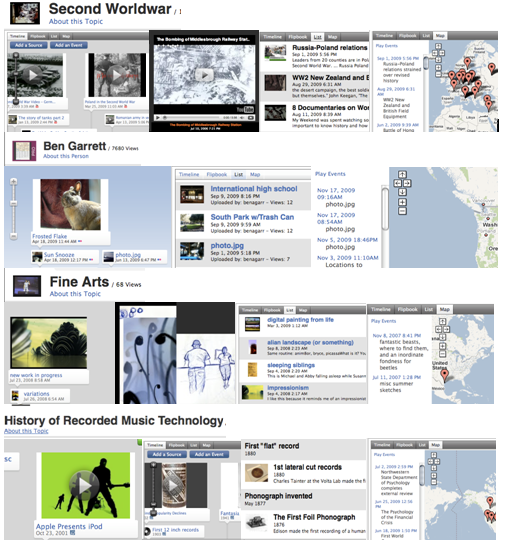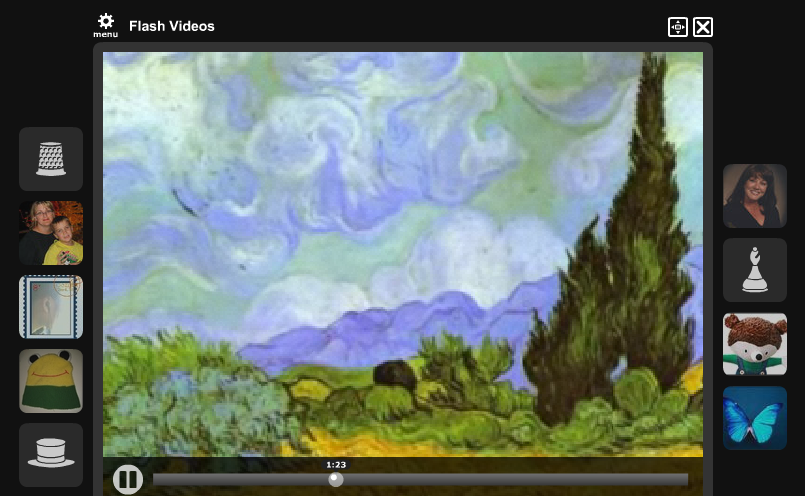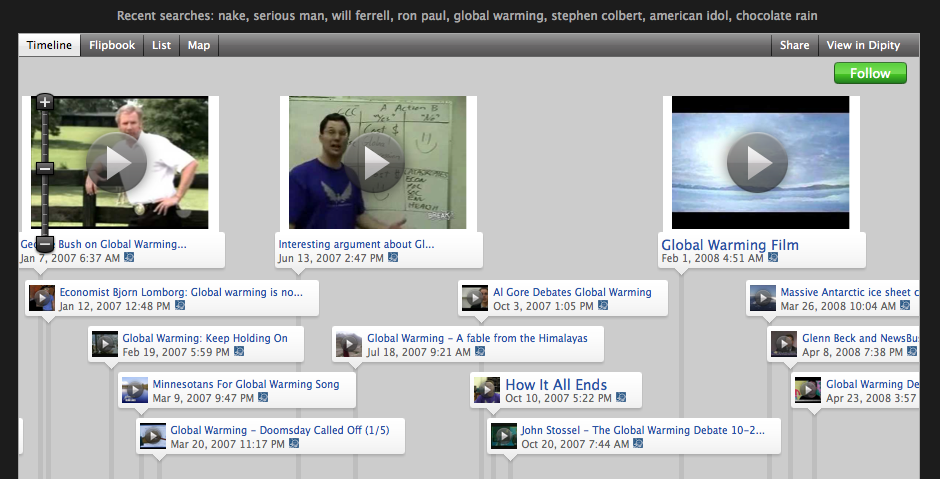E-learning concepts - Table of Content
TOC of Lecture notes, readings, exercises
Web 2.0
Storytelling
 Learning Objectives
Learning Objectives
When you have completed this session, you should be able to
- List some digital storytelling web 2.0 applications
- Create a digital timeline (dipity)
- Create a digital story
 Reading
Reading
 How will a story digital? What is this?
How will a story digital? What is this?
We all like tales and stories not only the kids. All the evidence shows that storytelling and tales slowly disappeared from school lessons, in misbelief that stories and pictures does not fit into scientific thinking and plays down the crystal-clear logical train of thought.
Added a Web-based publishing and content-sharing option.
Timelines - Dipity
Dipity is an online program that allows the user to create interactive timelines with events, descriptions, photos/images, URL links, etc.It allows users to work with content directly, or automatically pull highly relevant content from socially-curated sites like YouTube, Wikipedia, Digg and others using RSS and API integrations.
Once created, the interactive widget stays up-to-date, and can be embedded in blogs, social networks, and websites to add an interactive, engaging element to any site.
Elements
Place the picture, text and video elements of the events in chronological order to the time line and on the google map mark the location of events. Here are the four types of timeline views:

The first view is the timeline itself (or only a small part - of the timeline appears in the following picture), the second is a set of slides with the uploaded pictures, videos, the third is a list of events, and the fourth is the Google map marked geographic locations by events.
 <időrendben>
<időrendben>Why is it good? The class, the children can tell their own stories. How to apply it in the several subjects - only our imagination is the limit.
VoiceThread, the another tool of digital storytelling has already been presented and tested. Both these tools have different options: strength of the Dipity is the timeline and the RSS, the specific tool of Voicethread is the opportunity to comment the story directly, and it has comic appearance. The picture shows a Voicethread story with Flash animation backgrounds: http://voicethread.com/#q.b13870.i102798
What is the most important message for us of the digital presentation (Plain English): the focus is on whether we can involve and how we can involve the child in the preparation of web production! This is perhaps a little support to art education as well.
Timeline applications:
http://blog.xtimeline.com/, http://www.timetoast.com/
http://www.dipity.com
 Exercises
Exercises
1. Visit the site Dipity TeNeGen story! (You can find a very secret video as XXXX:))!
3. Registrate on VoiceThread site, and create a small story with some pictures.
References
How to use Voicethread: http://digitallyspeaking.pbworks.com/w/page/17791585/Voicethread
Copy the links into your learning diary.
